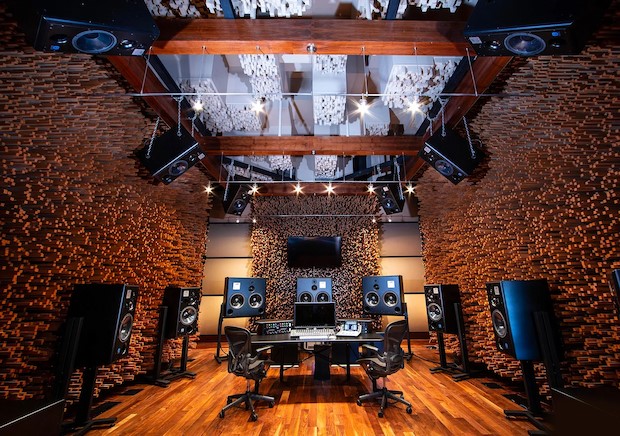How to Set Up a Music Recording Studio and Pursue Your Passion
Recording and mixing a great track, which was once confined to people with money or access to a huge room, is now as simple as collecting a few crucial pieces of equipment and finding a couple of additional inches of table space. That and your determination to bring your idea to reality is the perfect recipe for setting up your own recording studio!
Basic Set of Skills and Equipment
If you’ve gotten to the point where you want to record your music by yourself or with a couple of other musician friends, you probably know how to play basic piano. This is why, when you first start out with music production, having a keyboard instrument is critical.
You already know that you can’t build a professional studio in your bedroom overnight, but there are some fundamental elements that you can buy and invest the time to educate yourself on how to use. You can now browse online for the missing pieces and finish your musical studio equipment much sooner than you think.
Here is a list of some of the music-making necessities, along with a more extensive explanation of some of the music industry’s less-familiar words.
Isolated room for recording
Once you decide on a designated area for recording, your next step is soundproofing it with easy-to-use acoustic absorption panels. Soundproofing is the process of isolating one environment or location from another. Soundproofing a room would require filling any holes in/out of the room with heavy, dense material, as well as sealing any openings that would allow sound to escape.

The biggest benefit of this is that you can record noises or listen to music in the room without worrying about noise seeping into potential neighbours’ or roommates’ homes/rooms (and making sure no sound comes in). Room treatment with acoustic panels is a way of managing the sound reflections in a room to produce better recordings and mixes.
Computer/Laptop
This is pretty straightforward and you probably already got a computer at home. One thing you need to make sure is that your PC is fast and in good working condition. This will be a crucial part of your recording process. You need technology you can rely on so that your moment of inspiration can be taken advantage of.
Audio input/output device
Audio input devices allow a user to send audio signals to a computer for processing, recording, or carrying out commands. Devices such as microphones allow users to speak to the computer to record a voice message or navigate software. Others are made to interface a computer with a CD audio source, digital audio, or MIDI instrument such as a synthesizer.
Microphone for recording music
A recording microphone capable of reliably capturing a decent audio signal is essentially required for any record producer or performer. But, as you already know, not all microphones are made equal. It’s also a good idea to invest in the greatest studio microphone your money will allow. Having said that, exceptional value can be found at all price points.

Headphones
A set of the best studio headphones, in my opinion, is a must-have when monitoring your latest mixes or recording in the studio. Any good music producer will tell you that they monitor with whatever system they can get their hands on, whether it’s a pair of studio monitors, a Bluetooth speaker, or even a vehicle stereo.
The ideal monitor headphones for you in the studio will be those that allow you to mix and create the most epic sounding outcome imaginable. If you’re searching for a set of hardworking headphones that can withstand the rigours of everyday living, studio headphones can help, as they’re typically manufactured to a higher quality than most general-listening headphones. This purchase, in addition to adding acoustic absorption panels can truly provide you with incredible sound!
Studio Monitors
Studio monitor speakers strive for maximum accuracy. This means they convey the sound to you as closely as possible to the sound of the recording, without modifying it in any manner. They do not attempt to fix or enhance the audio, so if you listen to a horrible tape through them, you will hear just how bad it is.
Regular audio speakers strive to produce the best audio possible. They frequently have features that increase or enhance the sound. A bass boost is a classic example. Again, the goal here is not accuracy, but rather to convey the sound in the best possible light.
MIDI keyboard
A MIDI controller is a simple way to use your Mac or PC to play virtual instruments and sequence music. It works by sending MIDI (Musical Instrument Digital Interface) data to a computer or synthesiser, which interprets the signal and generates sound. If you wish to record directly with your actual instruments, you don’t have to use a MIDI, although it’s really useful to have one for additional effects.

DAW
A digital audio workstation (DAW) is a computer or software application that records, edits, and produces audio files. DAWs can range from a single software programme on a laptop to integrated stand-alone equipment and a highly complex system managed by a central computer.
Ableton Live or Adobe Audition are two examples of DAWs. If you’re more of an experimental musician and don’t want to spend money on software just yet, try Garage Band, which is the most user-friendly recording app available.
Different Cables
As you begin to unravel your recording journey you will find yourself organizing and reorganizing your cables such as a guitar speaker cable or a microphone connector.
